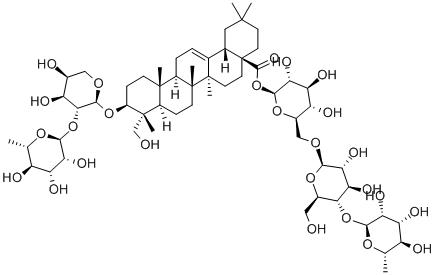Absorption and metabolism of Lycopene
-
Last Update: 2020-04-03
-
Source: Internet
-
Author: User
Search more information of high quality chemicals, good prices and reliable suppliers, visit
www.echemi.com
Last revision: 2016-12-20 05:49 classification: efficacy and effect 1 person commented that lycopene is a kind of natural carotenoid in the diet, widely existing in natural plants The main source of edible lycopene is tomato and its products The content of lycopene in tomato is about 30mg / kg The content of some tomato products is higher The content of lycopene in Xinjiang tomato sauce is more than 400mg / kg Lycopene not only has superior antioxidant activity, but also has the same physiological function as carotenoid, including regulating immune function, promoting cell gap connection, information transmission, etc At present, lycopene has a prominent effect on cancer prevention (1) The absorption and metabolism of carotenoids Garrett revealed the absorption process of carotenoids in food by using in vitro digestion model The results showed that when carotenoids (including lycopene) entered the intestine, the absorption of carotenoids could be increased 4 times by the presence of bile salts, while the absence of bile salts prevented the transfer of carotenoids into chyle granules, and the absence of pancreatin only reduced the absorption of carotenoids After cultured for 6h, human intestinal mucosal cells could absorb 28.6-46% of the microencapsulated carotenoids from the medium Porrini found that there was a weak absorption peak at 6h and a large absorption peak at 12h after ingesting 16.5mg of lycopene at one time It took 104H for the total disappearance of lycopene in serum Carotenoids (including lycopene) are generally digested into the small intestine, then mixed into chylous particles composed of lipid and cholic acid, and enter the intestinal mucosal cells through passive transport The intact carotenoid molecules are mixed with chyle particles and then released into the lymphatic system In plasma, carotenoids first appeared in chylomicrons and very low density lipoprotein (VLDL), then increased in LDL and HDL, and reached the highest level in 24-48 hours LDL was the main carrier of carotenoids and β - carotene, while the polar oxidized carotenoids were evenly distributed between HDL and LDL Between The intact carotenoid is excreted in the body with bile The concentration of carotenoids in bile reverses the level of carotenoids in plasma under normal and pathological conditions The hydrated derivatives of lycopene were found in human serum For example, the 5,6-epoxide of lycopene in diet was transformed into 2,6-cyclolycopene-1,5-diol, which may be formed by cyclization, differential isomerization and hydrolysis (2) The absorption and metabolism of lycopene the specific metabolism of lycopene in the intestine is still poorly understood Lycopene is fat soluble, its absorption and transport must rely on oil or fat to improve its bioavailability The results showed that compared with tomato juice, the content of lycopene in the tissue of oral mucosa could be significantly increased by the resin oil containing lycopene It is also reported that the lycopene in the hot processed tomato juice is more easily absorbed than that in the raw juice, and the CIS lycopene is more easily absorbed than the trans lycopene This may be due to the fact that the CIS structure of lycopene is more easily soluble in the bile acid micelles, so it is preferentially incorporated into chyle particles (CM) and absorbed Lycopene can be accumulated in human tissues The average level of lycopene in human plasma is (0.22-1.06) mmol / ml, accounting for 2.1% - 43% of the total carotenoids Some studies show that the level of lycopene is higher than that of all other carotenoids After taking a large amount of lycopene, the level of lycopene in serum did not increase significantly, such as eating 180g or 700g of tomato juice, which was equivalent to 12mg or 80mg of lycopene respectively, and the level of serum did not change However, after eating 2-3 cans of tomato juice every day, the level of Bergenin and β - carotene in the serum of the experimenter increased 3 times and 4 weeks later It has been reported that if some women continue to eat too much tomato juice, it may cause skin pigmentation, and the level of lycopene in serum increases, and the liver is also orange This disease is called "lycopenemia" The skin color of this patient can return to normal after stopping eating tomato juice for about 3 weeks.
This article is an English version of an article which is originally in the Chinese language on echemi.com and is provided for information purposes only.
This website makes no representation or warranty of any kind, either expressed or implied, as to the accuracy, completeness ownership or reliability of
the article or any translations thereof. If you have any concerns or complaints relating to the article, please send an email, providing a detailed
description of the concern or complaint, to
service@echemi.com. A staff member will contact you within 5 working days. Once verified, infringing content
will be removed immediately.







